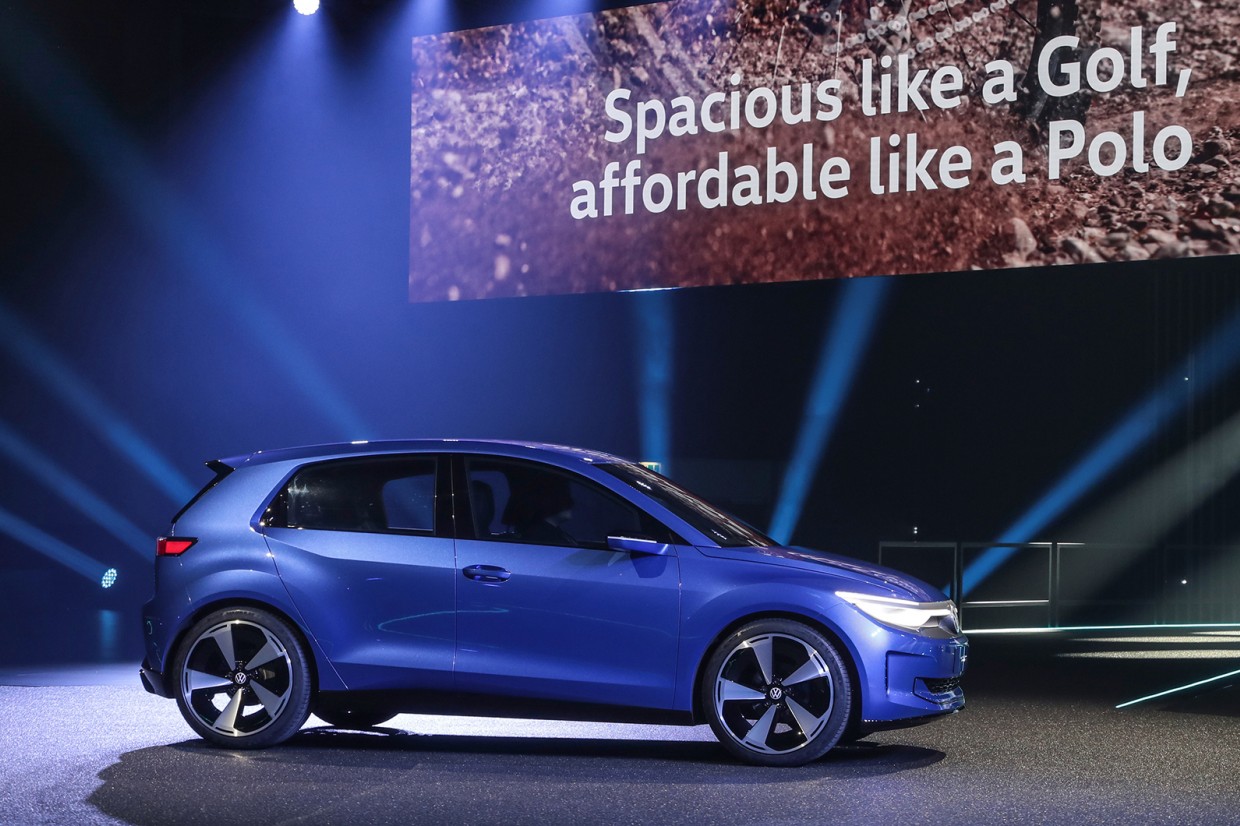
The new Volkswagen ID 2all concept doesn’t look particularly radical. It looks like a Volkswagen, and a somewhat conservative one at that.
That’s not to criticise the design: it’s well-resolved and well-proportioned, with some neat flourishes if you look at the details. But it’s a notable change from the electric models that have gone before it.
The latest electric vehicles news in your inbox: get our FREE newsletter
While the initial wave of the brand’s electric-only ID range featured a fresh design that was a step away from their combustion engined predecessors, the ID 2all, which previews a £22,000 electric hatch due to go on sale in 2026, clearly invokes the ICE Polo and Golf.
That might seem like a backward step, or at least a safe move. In reality, it’s anything but: the ID 2all was created in just six weeks by new Volkswagen design boss Andreas Mindt. And he wasn’t just shaping a crucial new EV: he had to develop a whole new design language that will be applied to future models.
The machine is the physical manifestation of a bold, rapid pivot in strategy led by new Volkswagen boss Thomas Schäfer, intended to accelerate the firm’s electric ambitions. But key to the new focus is drawing on the brand’s past.
“Our heritage is a great asset that we need to work with,” says Schäfer. “For us, Volkswagen stands for bringing e-mobility to the wider public.
“Volkswagen is changing – and we are changing Volkswagen.”
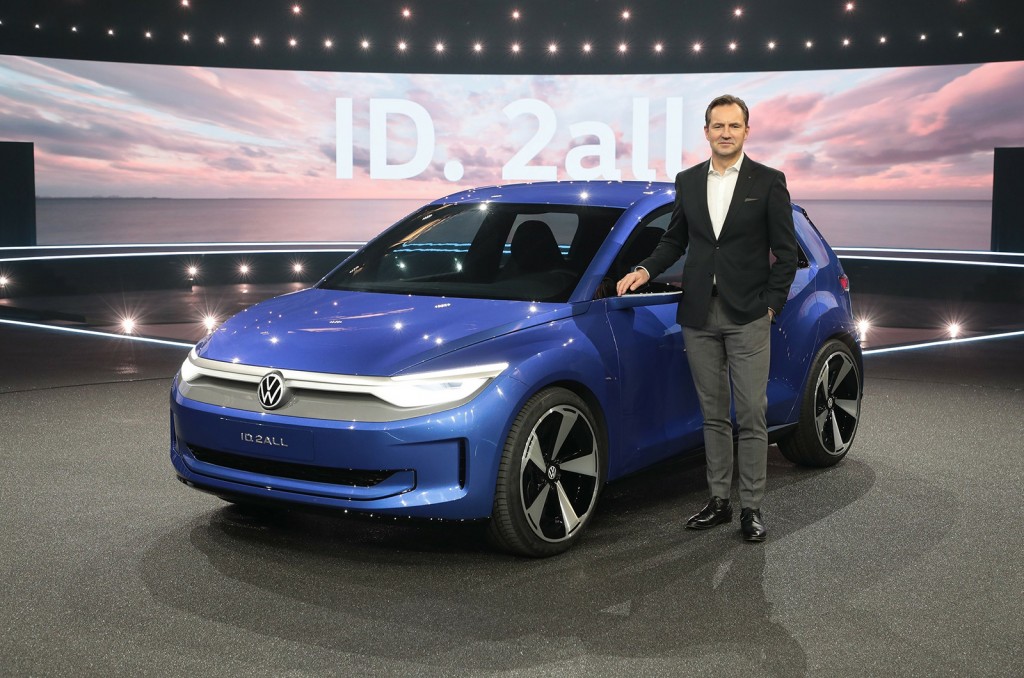
The story so far…
Schäfer became Volkswagen’s boss last year, one of the final links in a major overhaul of the leadership within the Volkswagen Group, including Porsche boss Oliver Blume taking over from Herbert Diess as group chairman.
Diess had been instrumental in the pivot to EVs, pushing the creation of the bespoke electric MEB architecture as the firm plotted its recovery in the aftermath of the dieselgate crisis. He was also responsible for the decision to introduce the ID sub-brand for Volkswagen’s EV models, rather than sharing VW’s long-established nameplates, including the fabled Golf, with ICE models.
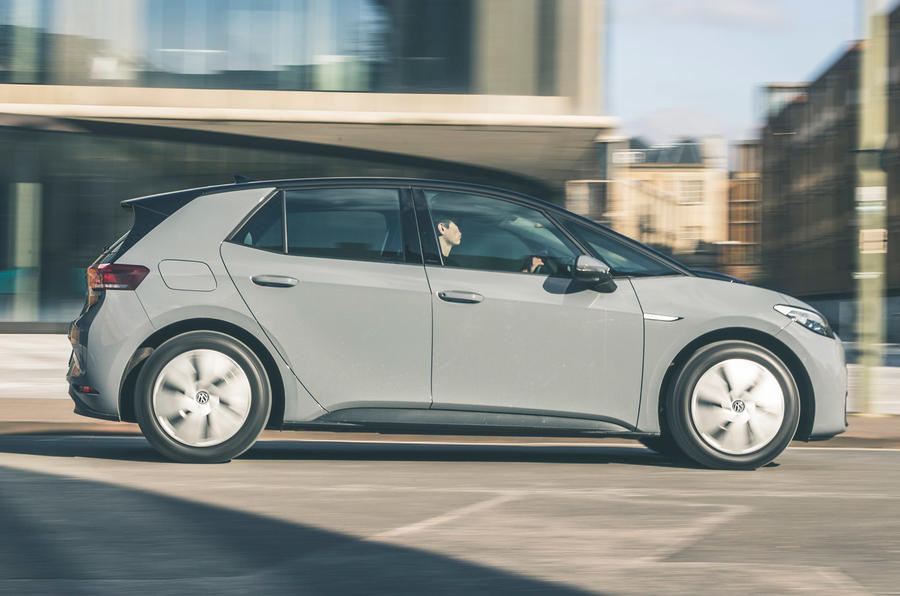
That push to develop electric models has been a success: it sold around 330,000 of them last year. But there have been concerns: the cars have been affected by software issues, and some of the longer-term plans caused concern.
One crucial project for the VW Group has been the ‘MEB Entry’ project, to develop a platform that could underpin a range of affordable electric models from Cupra, Skoda and VW. At the 2021 Munich motor show, then-Volkswagen boss Ralf Brandstatter unveiled the ID Life, a boxy, crossover concept that previewed VW’s entry-level EV. It did not prove popular internally.
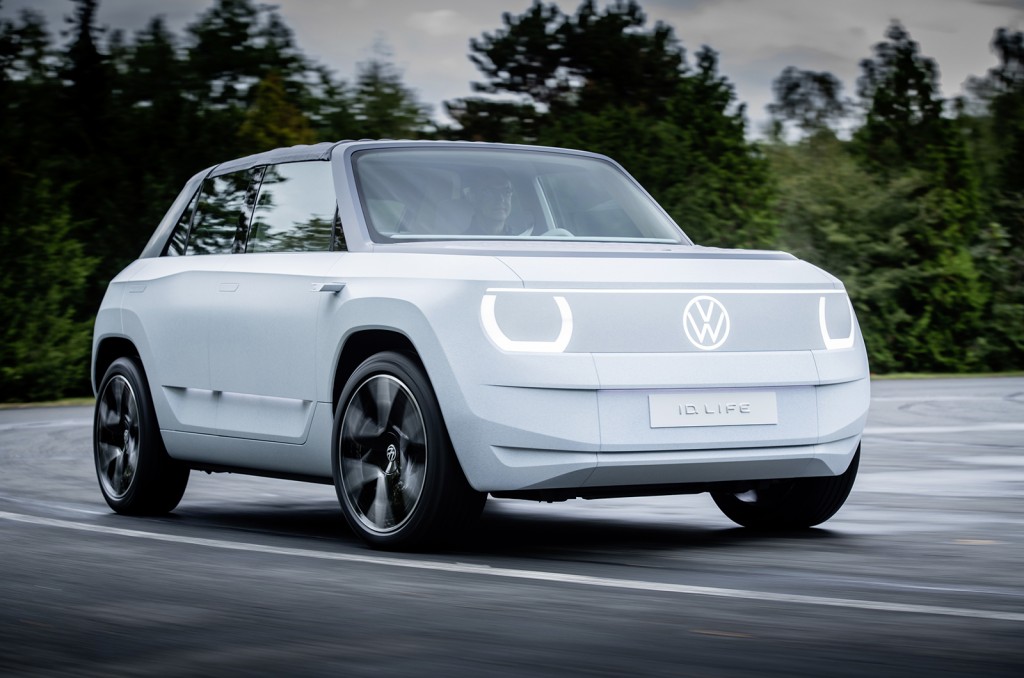
One of Schäfer’s first actions after moving over from sister brand Skoda to head Volkswagen was to can the ID Life design.
The importance of heritage
For Schäfer, the key to Volkswagen’s future success is building on what made it great in the past. That heritage is of making era-defining mass market machines such as the Beetle and Golf, and is hidden in plain sight in the firm’s title: peoples’ car.
Schäfer’s goal is to make Volkswagen a ‘love brand’ again, a producer of mass market models that are warmly embraced by their owners. Left unsaid: the firm's heritage and brand recognition is something that the growing number of EV start-up rivals simply haven't got.
“We have been mobilising the masses in the past, we have been mainstreaming technology, we’ve been democratising technology,” says Schäfer. “We want to go back to that love brand. We should be a brand that is loved by people, that you can touch, that listens to their customers and their voices.”
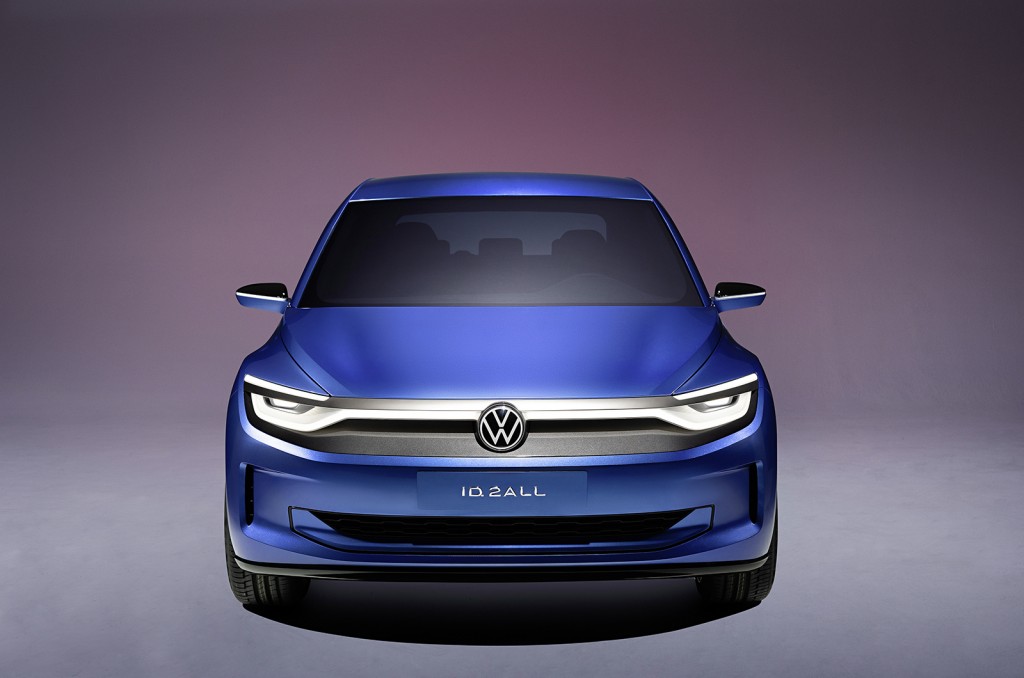
That new philosophy encompasses more than just machines: it’s about values, and will lead to a revamp in marketing, brand communications and its approach to sales. “Volkswagen as a brand has a promise in its name,” says sales boss Imelde Labbe. “We need to define the DNA of the brand, to capture the heritage of the brand and carry it into the future.”
That said, Schäfer is keen to point out that embracing the past doesn’t mean being stuck in it: “Volkswagen is a brand that constantly reinvents itself, and never stands still.”
The approach is essentially to keep pushing new technology to customers – but to do so with a familiar, friendly, Volkswagen face. And that approach is best seen in the firm’s future EV line-up.
How the ID 2all points to the future by nodding to the past
Experienced designer Andreas Mindt started his new role as Volkswagen’s chief designer on February 1. But around a week before that date, he’d already been given his first big job by Schäfer: to completely redesign the new entry-level model that would be revealed as the ID 2all.
Oh, and the machine had to be ready for a public reveal in six weeks. No pressure then.
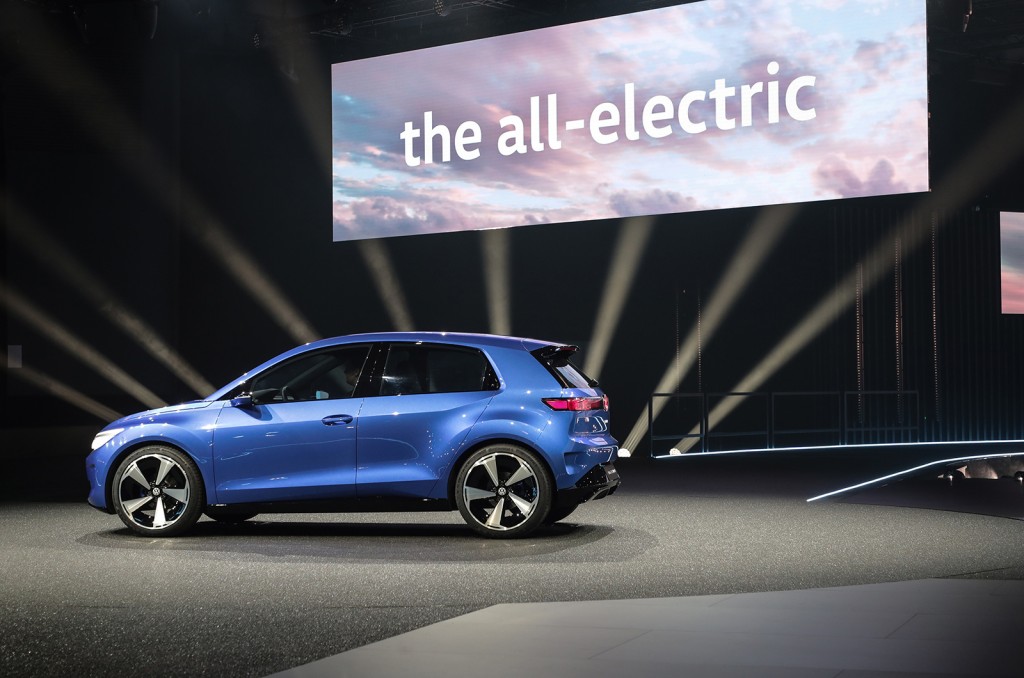
The enthusiastic Mindt embraced the challenge. It might have been the fastest he’s ever designed a car “by some margin”, but he had experience. While he moved across from Bentley and previously worked at Audi, Mindt spent a big chunk of his career working at Volkswagen, leading the exterior design for the Mk7 Golf.
In-depth: £22,000 Volkswagen ID 2all concept revealed
And so he’d long thought about the design of entry-level Volkswagen models. “Always,” he says. “I worked before for Volkswagen, so I always had something in my mind. An affordable car like this needs to be a Volkswagen, a true, proper Volkswagen.”
Mindt and his team had a platform to work on: the MEB Entry architecture was essentially sorted, so many of the fixed points were set. More were finalised due to the previous ID Life concept – so even the location of the concept’s door handles were fixed before work started.
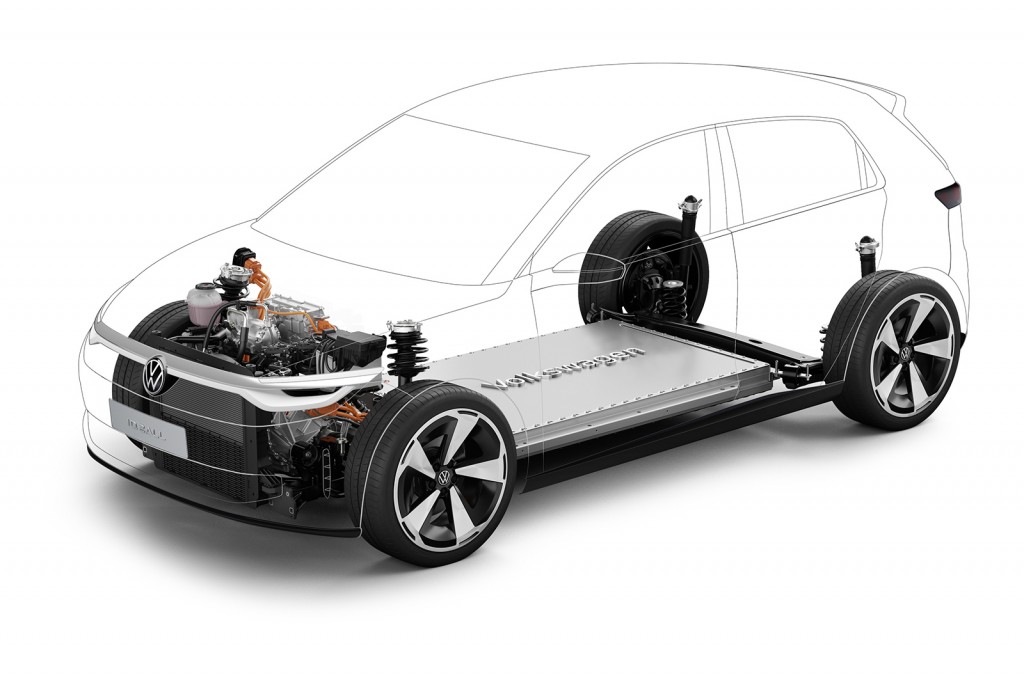
Still, six weeks to design a car – even a concept that doesn’t have to be road legal – is remarkable. The first step for Mindt was to define Volkswagen’s new design language, drawing on three key themes: stability, liveability and excitement.
From there, Mindt drew on what has made previous VW models great, picking out elements that will be repeated on future models. So the ID 2all sports a C-pillar design similar to the first-generation Golf, and elements of the wheel arches inspired by the Beetle. The body crease down the side of the car echoes the Scirocco.
Importantly, though, they aren’t direct copies: they’re more like ‘Easter eggs’, something to reward VW aficionados who know where to look. “You need to keep it fresh,” says Mindt. “You can take elements from classic cars, but you need to be progressive, modern. When people buy furniture, they don’t want grandma-style furniture, they want modern furniture.”
The result is a car that is a definite step away from the rounded ID models, to a more traditionally shaped machine with a friendly face that could just about pass for a Polo or Golf.
Which is the point: with its target price of £22,000 (€25,000), this is intended as a volume machine, one that can help switch a whole new wave of buyers from ICE to EVs. Including, no doubt, many Polo and Golf buyers.
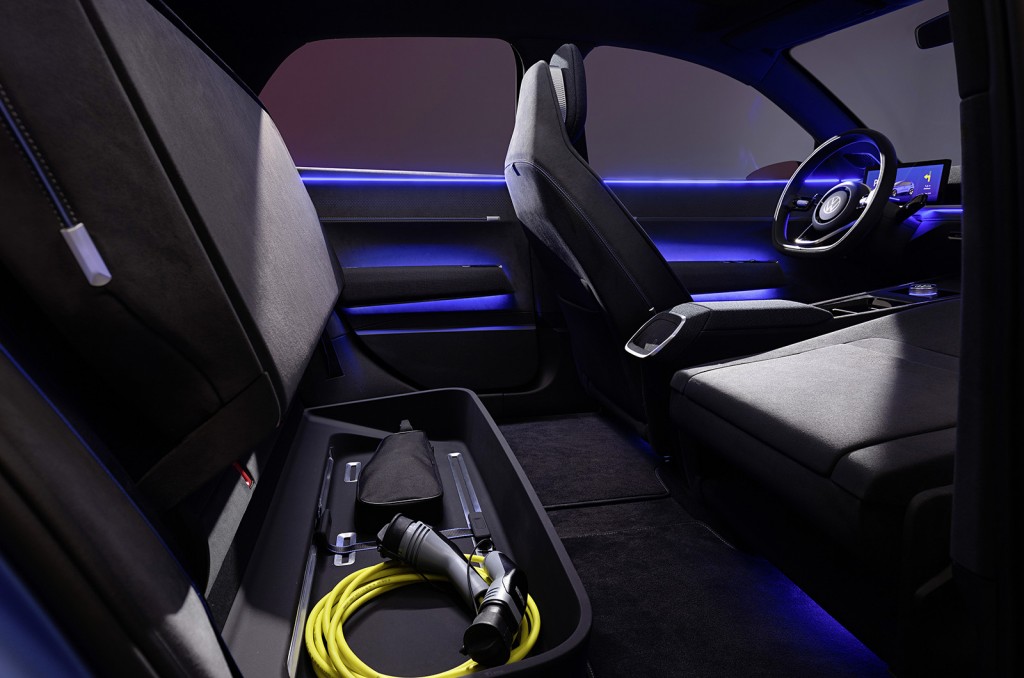
The ID 2all has essentially the same specifications as the ID Life it replaced. The MEB Entry platform is front-wheel-drive (to allow for more luggage space in the rear), and there’s only one type of motor available for it: a 166kW unit.
There are two battery sizes – 38kWh and 56kWh – with the bigger one giving a range of up to 280 miles. It’s slightly smaller than a Polo in length, but because of the flat chassis floor and short overhangs, larger inside, particularly with a big 490-litre boot.
The future line-up – and how classic models will go electric
The space of change under Blume and Schäfer has been dizzying, as both Volkswagen and the wider VW Group’s plans have been comprehensively reworked. But the focus is still on an electric future: the brand has even upped its target for EV sales by the end of the decade.
The vaunted Project Trinity – a software-heavy future range-topping halo model using a new SSP platform – has been pushed back, and its design reportedly overhauled.
Blume has pushed the rapid development of an MEB-Plus platform, which will allow for new software, upgraded infotainment and faster charging. And the group has also been developing another new platform underneath MEB Entry for a sub-£17,000 (€20,000) car.
Volkswagen is promising 10 new EVs by 2026, starting this year with the recently facelifted ID 3, the ID 7 saloon and the long wheelbase version of the ID Buzz.
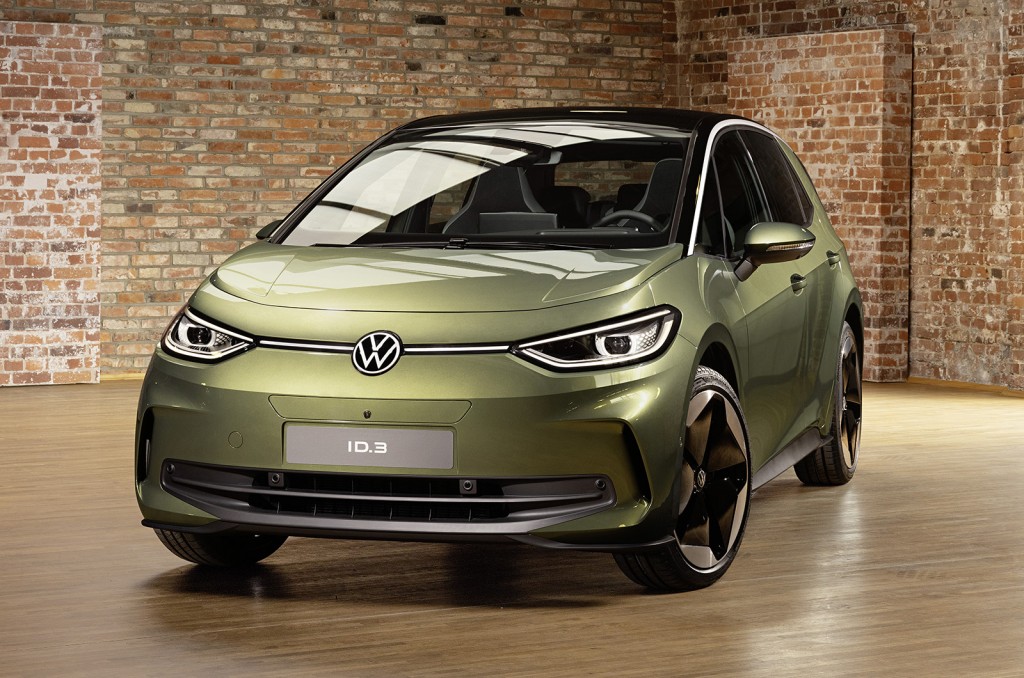
That number also includes the ID 2all and a closely related crossover – which will feature rugged styling likely inspired by the T-Roc – that will use the same platform (both will be built alongside entry-level Cupra and Skoda models in Spain).
Schäfer says that the new sub-£17,000 model – which could be named the ID 1, although he said it has yet to be finalised – should arrive around 2027 or so. “It has to come sometime around then,” he says. “We need to have a car that is affordable at the entry level. It’s almost an obligation for Volkswagen, and we need to get it right.”
That said, that is a classic easier-said-than-done project, with Schäfer calling it “the real Champions’ League”. He hinted that economies of scale and developing battery technology would be key, and did suggest that car could be built outside of Europe where production is cheaper.
Beyond that, Schäfer has pledged to use some of Volkswagen’s existing model names, including the Golf and Tiguan. “Our heritage is related to great, iconic models that we can transport into the future,” he says.
There has been reports that the Golf nameplate could have been applied to either the production version of the ID 2all or the facelifted ID 3 – but Schäfer was adamant that wasn’t the case. “We want to reserve the iconic names for the true successors of those models,” he says. “If you make Golf, it better be a Golf – you know, proper.”
That’s the key: pretty much everyone knows what a Golf is, and what it stands for. And, generally, people like it, which is how and why the model has prospered over decades. The key for Volkswagen is to use that heritage to build for the future.
“Brands like the Golf will not disappear in the future,” says Schäfer. “It would be a mistake to let that brand die. So instead we're going to focus on keeping that alive. It doesn't mean we're looking back. That’s never a good alternative.
“We don't want to regurgitate the past and be overly nostalgic. We want to keep the fire burning that has been driving us for many years.”
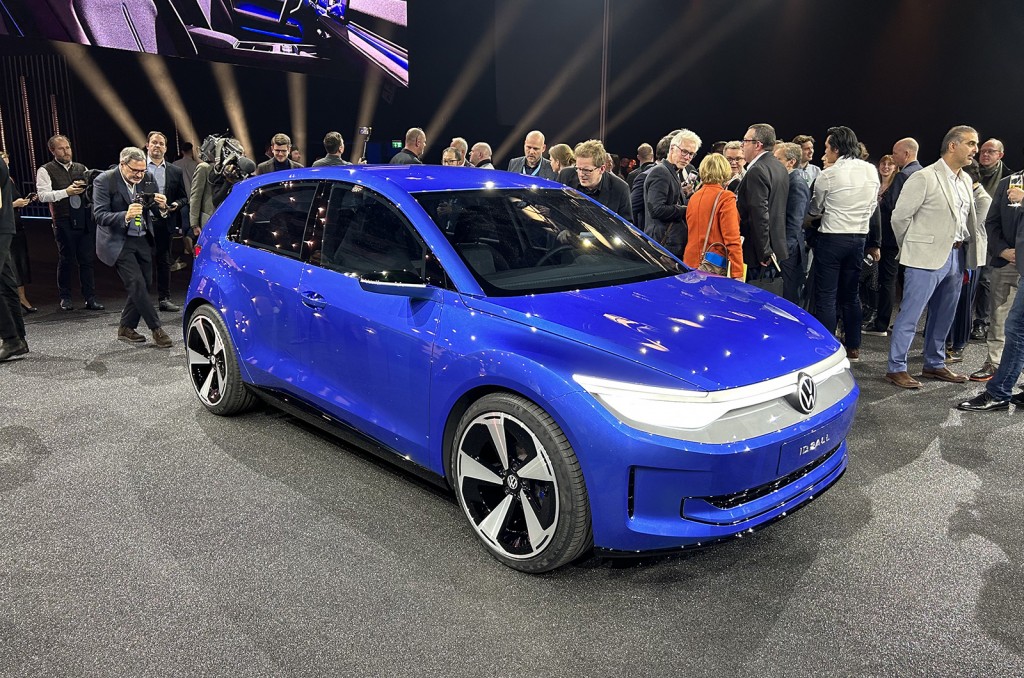
READ MORE
Subscribe to the Move Electric newsletter
e-CARS
What is a heat pump and how do they benefit electric cars?
Bold new Volkswagen ID 2all previews sub-£22,000 electric car
e-BIKES
Ten electric bikes we're excited for in 2023
Nine ways to keep your e-bike safe
E-bike theft: how common is it and what can you do to protect your e-bike?
Haibike AllMtn CF 6 e-bike review
e-MOTORBIKES
10 electric motorbike start-ups you should watch out for
Energica e-motorbike to take on all-comers in US racing series
Ducati: How the Italian motorbike brand is gearing up for the electric era
e-SCOOTERS
Planned laws to legalise private e-scooters face delay
Leading e-scooter firms team up on best-practice guide for cities
Ambiguity over e-scooter legality causing ‘confusion’, says police chief
e-WORLD
Solar panels: 8 ways the sun can power your electric life
First ride: Lunaz Upcycled Electric Vehicle bin lorry
